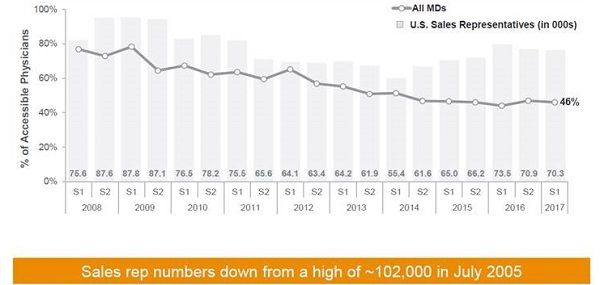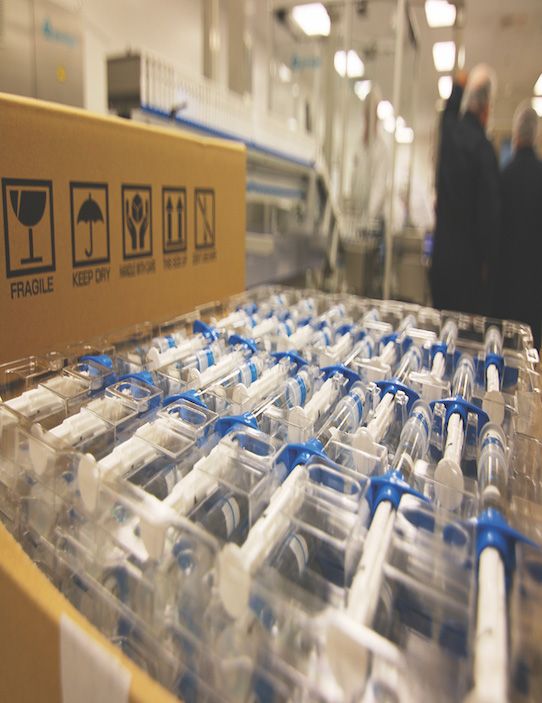Sales rep count holds relatively steady at 70,000, says ZS
Also steady: the percentage of no-see doctors
In roughly the 2013-2016 period, there was an inverse relationship between the number of reps in the US industry (going down steadily) and the proportion of healthcare providers whose practices banned rep visits (the “no see” doctors). ZS, the business consultancy, has been tracking both for over a decade and in the past two years, has seen a flattening of the trends. As of the first half of 2017 (per ZS’ PharmaForce Deployment Analyzer), the rep count is around 70,000, and the percentage of no-see docs (per ZS’ AccessMonitor) is around 46%.

It's too early to tell whether some sizable recent layoffs--at Eli Lilly and Merck--presage a trend; in Merck's case, roughly half of the 1,800 sales rep jobs are offset by new sales openings in chronic care. Lilly is cutting 3,500 positions (2,000 in the US) and closing some facilities, but noted that new capital investment and new hiring is continuing.
For a historical perspective, the rep count peaked, according to ZS, in 2005 at 102,000, and plummeted to 61,900 in the second half of 2013—arguably the bottom point in the “patent cliff” where branded products were coming off patent but not being replaced as rapidly by newly approved ones. In 2009, physician access was at an all-time high in recent years, at nearly 80%, and has hovered in the 45-50% range in the past two years.
Communication channels
Pratap Khedkar, ZS managing principal, looks to other data to understand what’s going on with pharma-physician interactions. “Our studies of the oncology profession—a notably information-driven type of medical practice—shows that when there is a dearth of new product introductions, rep access goes down substantially,” he says. In place of medical innovation and product launches, the pharma industry tends to promote information on diseases, or samples, which ZS calls “free stuff;” what doctors want is “news you can use” such as information on formularies in managed care plans, or non-financial patient services.
Meanwhile, the communication channel is evolving. In 2015, the AffinityMonitor found that the volume of digital messaging (push sends) surpassed face-to-face rep calls, which had been running at around 175,000 per year and are now approaching 100,000. Meanwhile email to healthcare providers has skyrocketed, passing 250,000 as of the beginning of this year.

Newron, Myung In Pharm Form Partnership Centered Around Treating Schizophrenia in South Korea
January 14th 2025The license agreement will feature an upcoming Phase III trial and—depending on results—the development, manufacturing, and commercialization of evenamide as a potential treatment option.